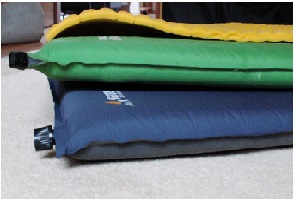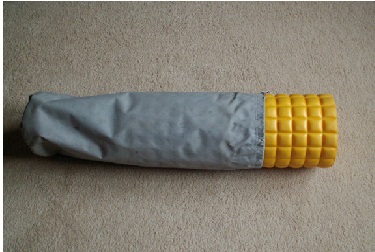Sleeping mats
A sleeping mat is often more important than the sleeping bag. The main task of a sleeping mat is create sufficient insulation from the ground. Genarally the best mats for insulation are self-inflating designs. However, self-inflating mats are vulnerable to punctures. They tend to be punctured by unseen sharp objects on the floor. Long periods of time exposed to ultra-violet light will also compromise this mat design. The higher prize is another disadvatage. A very good compromise between price and function are foam sleeping mats with a closed pore structure, so called, “evazzote” (EVA). Other foam sleeping mats are suitable only for dry environments or as protective layers to prevent puncturing self-inflating mats. Alumats are mats that have one or both sides covered in a thin layer of aluminium. They are more often used as emergency equipment.
Size - the thicker the mat, the greater the insulation and warmth but at the cost of increased weight. A 10 cm thick mattress would be the most comfortable option for sleeping but would be very uncomfortable and impossible to carry. Sleeping mats that are 2.5 cm thick are a good compromise between weight and sleeping comfort.
Width 60 cm is the standard width, bigger people should buy a wider one.
Length - the standard length is 180 cm, in the most cases this is enough. You can use a rucksack or a jacket under your head, etc. Taller individuals can buy a sleeping mat of 200 cm long.
When buying a sleeping mat, consider the comfort against the price and weight. For its long life and affortable prices, the EVA sleeping mat is probably the best. For long winter trips, you must consider the risk and vulnerability of the self-inflating with its higher levels of comfort against the "indestructible" yet difficult to pack and store EVA mat.
 | |
| Different thickness of sleeping mats (1 cm, 2,5 cm, 3,5 cm) | |
 | |
| „Evazote“ (EVA) is a good compromise between the cost and the function |
